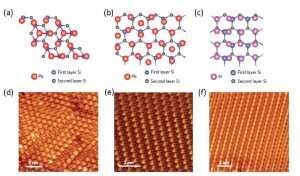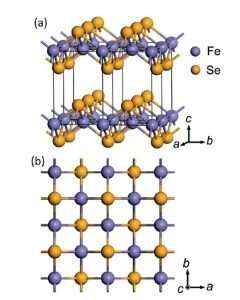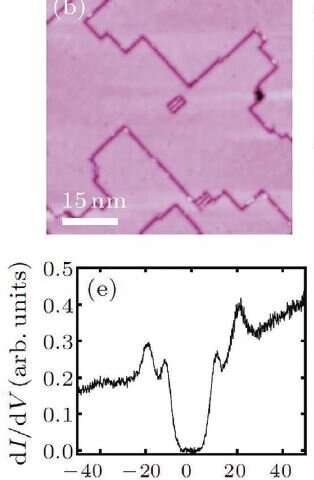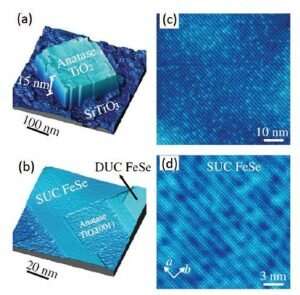Interfaces the key in atomically-thin, 'high-temperature' superconductors

An international FLEET collaboration publishing a review of atomically-thin 'high temperature' superconductors finds that each has a common driving mechanism: interfaces.
The team, including researchers from the University of Wollongong, Monash University and Tsinghua University (Beijing), found that interfaces between materials were the key to superconductivity in all systems examined.
The enhancement of superconductivity at interfaces (interface superconductivity enhancement effect) in atomically-thin superconductors is a unique tool for discovering new high-temperature superconductors, and could be used to finally unlock the elusive mechanism behind high-temperature superconductivity.
Systems studied include:
- elemental metals grown on semiconductors
- single-layer iron-based superconductors
- atomically-thin cuprate (copper based) superconductors
The review investigated the role of molecular-beam epitaxy (MBE), scanning tunnelling spectroscopy (STM/STS), scanning transmission electron microscopy (STEM), physical properties measurement system (PPMS), in fabricating and identifying atomically-thin superconductors.
Superconductors: a background
Atomically-thin superconductors (whether iron based or copper based) are a type of 'high temperature' (Type II or unconventional) superconductor in that they have a transition temperature (Tc) much higher than a few degrees Kelvin above absolute zero.
-

β-FeSe lattice structure. (a) 3D model. (b) Top view. Credit: FLEET -

Superconductivity in single-layer FeSe films grown on STO substrates. Top: STM image, bottom: scanning tunneling spectroscopy showing superconducting gap with pronounced coherence peaks. Credit: FLEET -

STM imaging (enlargements on right). Top: anatase TiO2 (001) island on SrTiO3(001) substrate. Bottom: SUC / DUC FeSe films on anatase TiO2. Credit: FLEET
The driving force behind such Type II superconductors has remained elusive since their discovery in the 1980s. Unlike 'conventional' superconductors, it is clear they cannot be directly understood from the BCS (Bardeen, Cooper, and Schrieffer) electron-phonon coupling theory.
In successive discoveries the transition temperature Tc has been driven steadily higher, and in the last decade there has been significant advances in the use of atomically-thin superconductors, both iron- and copper-based.
These new discoveries challenge current theories regarding the superconducting mechanism of unconventional superconductors and indicate promising new directions for realizing high-Tc superconductors.
"The ultimate goal of the research of superconductivity is finding superconductors with a superconducting transition temperature (Tc) at or higher than room temperature," says lead author Dr. Zhi Li (University of Wollongong).
The review paper Atomically thin superconductors was published in the journal Small in May 2020.
More information: Zhi Li et al. Atomically Thin Superconductors, Small (2020). DOI: 10.1002/smll.201904788
Journal information: Small
Provided by FLEET





















